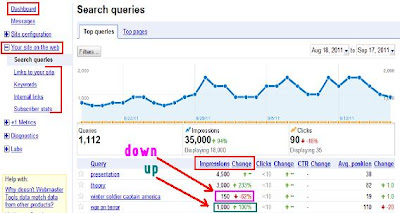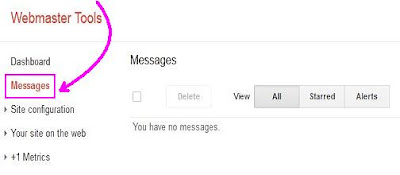As of 2 June 2012, Google has a total visit of approximately 1.6 billion. This whopping figure amounts to
66.85% of all visits, making it the number one search engine. Bing and Yahoo lag behind with around
243.6 and
233.6 million views respectively.
Looking into these statistics, you already know the answer to common questions like the following:
- Why should a website rank for Google search results?
- Why focus on Google’s SERP ranking when there are plenty of other search engines?
- Why concentrate on Google?
If you are one of those people who are unsure about optimising their site for this Web giant, then you need to start modifying your online marketing campaign. And, before you start developing new strategies, take time to set up Google Webmaster Tools.
You may be wondering just how much you are going to pay for the service. Well, the great news is that it is free. Imagine all the wonderful things you can do and the valuable data you can gather without allocating a single penny.
So, what exactly are its functions?
Generally, it assists you with the following tasks:
- Find out how Google indexes your website content
- Diagnose possible problems that the algorithms may meet when accessing your site
- Come up with ideal optimization techniques for better ranking
Additionally, it provides you with essential information such as search data, external and internal linking inventories, and notifications on potential guideline violations.
As a beginner, you may find it hard to understand the features and functions in Webmaster Tools. In that case, you can gain basic comprehension on its uses by checking out these tips.
1. Have A Look At The Numbers On Impressions
Through it, you will know which targeted keywords your website appears for in search results. You can view these details by accessing “Dashboard” and then, clicking on “Your site on the web”.
If you want to look into specific data, you can choose any of these options.
- Keywords – most prevalent search terms on your website
- Links to your site – other sites linking to you
- Internal links – amount of links pointing to a certain page on your site
- Search queries – key phrases or keywords the users are typing in to access your website
You need to study your Impressions statistics and graph regularly, so you will know the highs and lows in your traffic.
2. Monitor Your Website For Potential Problems
Through Webmaster Tools, Google will send alerts whenever your site has crawl errors like duplicate descriptions or titles and malware (e.g. virus or worm infection). You can also obtain HTML suggestions on driving higher traffic and crawl statistics.
3. Send A robots.txt File
If a sitemap specifies which pages to index, a robots.txt file indicates which webpages search algorithms should not index. You can benefit greatly from it, especially if you are using a content management system (CMS) since you can help spiders save time in crawling only relevant CMS files.
4. Submit A Sitemap
Based on the third tip, you already have an idea on the sitemap’s main importance; hence, your website must never go without it. Assuming that you have a system for managing your content, you can set up a plug-in to create the sitemap for you and update it automatically whenever you add a webpage.
One ideal tool for such purposes is the Extensible Markup Language (XML) Sitemap, which aids search spiders to index your site’s deep pages, particularly those that are hard to find or that Google has not indexed yet. Once you already have it, you can easily do the following:
- View its status
- Check out updates
- Find out the number of URLs you have sent through it
- Know its errors by clicking on “details” to receive alerts
As a note, the last task is important given that you can submit as many as 50,000 URLs to your XML sitemap.
5. Use “Fetch as Googlebot”
If you want a specific webpage indexed immediately, you can submit it using this feature. Once search algorithms have indexed it, you can check out how it appears on Google.
6. Check Your Messages
Another vital feature from Google Webmaster Tools is the “Messages”, which provides you with notifications regarding problems or errors on your site. Given that, you must always be on the lookout for new messages.
7. Submit Your Website Again
Has your ranking in SERPs dropped? It could be that the Penguin Update has affected your site. If this is the case, find out how you can recover from the impact. And, once you are sure that you have fixed every problem, you can submit your site again to Google.
8. Explore More Features
Almost at the end of the navigation bar, you can see the “Labs” option (see image); click it to check out more tools. As a note though, most of these are still in development. Since you cannot use them just yet, the best thing that you can do is to explore and learn their functions.
9. Set Your Target Location and Chosen Domain
If you are targeting an audience in a particular geographic area, you can access the “Settings” option through “Site Configuration” and then, specify that place.
Additionally, you can choose a preferred domain, especially if your website has canonicalization (something to do with duplication) issues. This way, your site will appear with “www” or none at all in search results.
CONCLUSION
So, there you have nine basic ways of using Webmaster Tools. As a note, these insights are not exhaustive of all the features and functions that you should know of. You can learn further about this Web service by continually exploring and studying it.
Before we end, you have to be aware that it Google occasionally updates it. With that said, take time to discover any improvement. This way, you can keep up with any additional uses.













0 comments:
Post a Comment